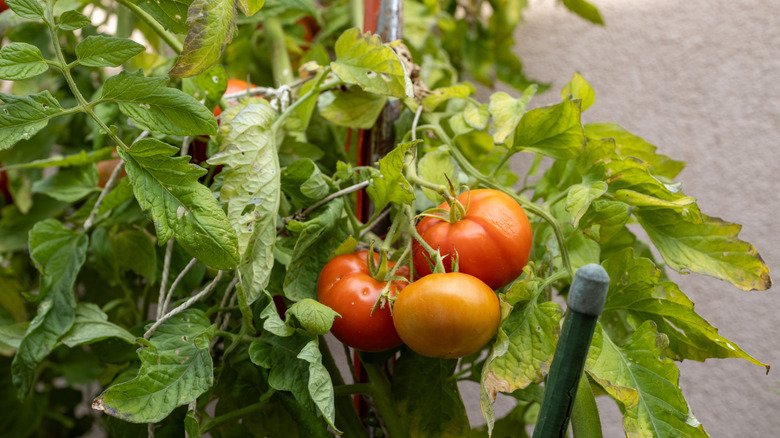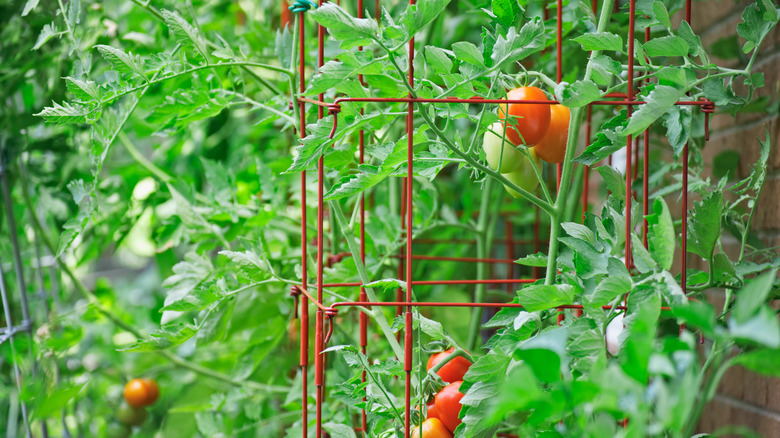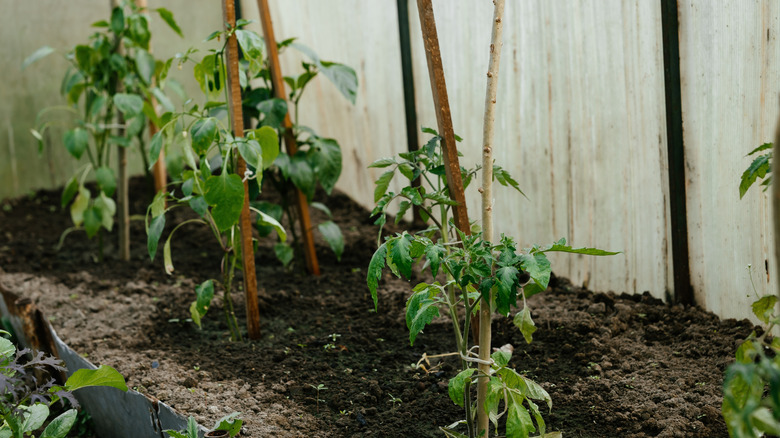The Best Way To Support Your Tomato Plants To Keep Them Happy And Healthy
We may receive a commission on purchases made from links.
Tomatoes are a versatile, delicious option for gardens across the world, especially if your region gets a lot of sun. The yellow, red, and green produce come in thousands of varieties and can be grown from seeds, starters, or bought fully grown and harvested throughout the summer months. No matter how you decide to get your tomato plants (or which of the thousands of varieties you end up choosing based on your own tomato preferences), you need to create adequate support so that your tomato plants are happy and healthy throughout the growing season. That means opting for cages that can help your plants grow the best tomatoes in your garden.
While there are many ways to support your tomato plants, like investing in trellises or bamboo stakes, the good old tomato cage is an expert-backed way to get the most bang for your buck. House Digest spoke exclusively with Lisa Steele, author of "The Fresh Eggs Daily Cookbook" and host of the American Public Television/CreateTV series "Welcome to My Farm," about tomato supports. "I'm old school," Steele said. "I use the circular metal tomato cages that flare out at the top." But her reasoning goes beyond the simple nostalgia of the cage design. "Tomato plants do have the tendency to droop once the stems are heavy with fruit, so the cage helps to keep the plant upright and the tomatoes off the ground," Steele explained.
Benefits of tomato cages
In her exclusive interview with House Digest, expert Lisa Steele said that tomato cages are a reliable and easy way to support tomato plants. Beyond keeping the plant from drooping when the fruit grows, it aids in the growing process for the leaves of the plant, too. "The cage also keeps the leaves off the ground, which can prevent them from picking up bacteria from the soil and allows for better airflow around [and] through the plant," Steele explained. "Cages support the stems and keep the tomatoes off the ground and at a more convenient height for picking," she added.
Plus, metal cages are incredibly easy to come by, as they're available at most home and gardening stores for a low price (Home Depot has a durable tomato cage for sale for under $5). Once you've acquired the basic material, installation is a breeze. "The cages are simply stuck into the soil or in a pot, if the plants are in pots, and the spikes on the bottom help to keep the cage in place," Steele noted. She mentioned that gardeners should center the tomato inside the cage as much as possible, and you can opt for a square cage if it makes for an easier fit in your own garden. In the off-season, Steele recommends stacking the cages together for easy storage and notes that "they can even be covered in chicken wire and used upside down to cage smaller plants and keep squirrels, bunnies, and birds (and chickens!) from eating the plants."
Other great tomato support mechanisms
If you don't like the look of tomato cages or if they simply aren't the right fit for your garden, there are still some great options out there. Expert Lisa Steele exclusively spoke with House Digest about how to go about finding the right tomato support based on the varieties you're growing in your garden. "Tomato cages will work with all types of tomatoes, including cherry tomatoes," she clarified. But, she added, "There are some varieties of tomatoes that grow far taller than others and have more vines. In those cases, stakes can work better because they give the tomatoes more room to grow taller."
Steele clarified that simple DIY tomato supports you can make with just wood takes a lot of forms, ranging from simple to complex. One way is to use branches or poles and tie them at the top to create a teepee, which often provides more vertical space for taller-than-normal tomato plants. Regardless of the support system you're using for your tomatoes vertically, Steele says there's one root support that every tomato grower should consider: eggshells. "[Tomatoes] need more calcium than other plants, so adding crushed eggshells to the soil around the tomato plants, and in the hold when they're planted or transplanted, can help to prevent blossom end rot, which is a condition where the non-stem end of the tomato turns black and rots," Steele told House Digest.


